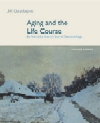1. One important function of the Centers for Disease Control and the National
Center for Health Statistics (http://www.cdc.gov/nchs/)
is to provide the public with information on citizens' health. To read about
the health of elderly Americans, go to the website, link to News Releases, and
select 1999. Read the article titled "Annual Report on Nation's Health
Spotlights Elderly Americans (Oct. 13, 1999)" and answer the following
questions: - Since 1970, how much have death rates from heart disease been reduced among
persons aged 65-84?
- What disease afflicts a majority of noninstitutionalized persons age 70
or older?
- How many nondisabled persons 65 years of age and older participated in some
form of exercise at least once during a recent two-week period?
- What group of elder Americans was least likely to have private insurance
to supplement Medicare coverage?
- About how many of the older Americans who exercise achieve the recommended
levels of exercise?
2. The objective of the World Health Organization (http://www.who.int/ageing/)
is the attainment of the highest possible level of health by all people. To
find out more about the health of older people, go to WHO's website and link
to "World Health Day 1999: Active Aging," then to "The Facts."
Answer the following questions: - What are the effects of alcohol on older people?
- What are the benefits of physical activity in older age?
- What is the "Global Embrace"?
- What percentage of men and women aged 65 – 74 years of age are smokers in
developed countries?
3. CNN maintains an interactive Web site on a wide variety of topics. To read
about gender-based health differences, go to the following CNN website: (http://www.cnn.com/HEALTH/9811/02/gender.health/).
Read the article, "New study cites top gender-based health differences,"
and answer the following questions: - What are the gender differences for sexually transmitted diseases?
- What are the gender differences in terms of developing lung cancer
for smokers?
- List the top ten health differences between men and women.
Scroll down the page and click on the article, "Study: First heart attack
survival rate is worse for women." Read the article, and answer the remaining
questions: - Who was involved in the study, and what did the researchers find
concerning death rate and heart attack?
- What was heart attack associated with, and why do women appear to
be at greater risk for death following the first heart attack?
4. The National Stroke Association (http://www.stroke.org/)
is a Web site dedicated to helping the public understand what a stroke is and
how you can prevent a stroke. Go to the homepage and click on the first of the
"Top 8 Links" listed on the right-hand side of the page. Work your
way down the page to number eight. After you have read these, answer the following
questions: - What are some of the most common symptoms of a stroke?
- What is a stroke?
- What effects does a stroke have on the brain? What does it do to the right
and left hemisphere of the brain?
- What are the different types of rehabilitation available for someone who
has suffered a stroke?
| 


 2002 McGraw-Hill Higher Education
2002 McGraw-Hill Higher Education